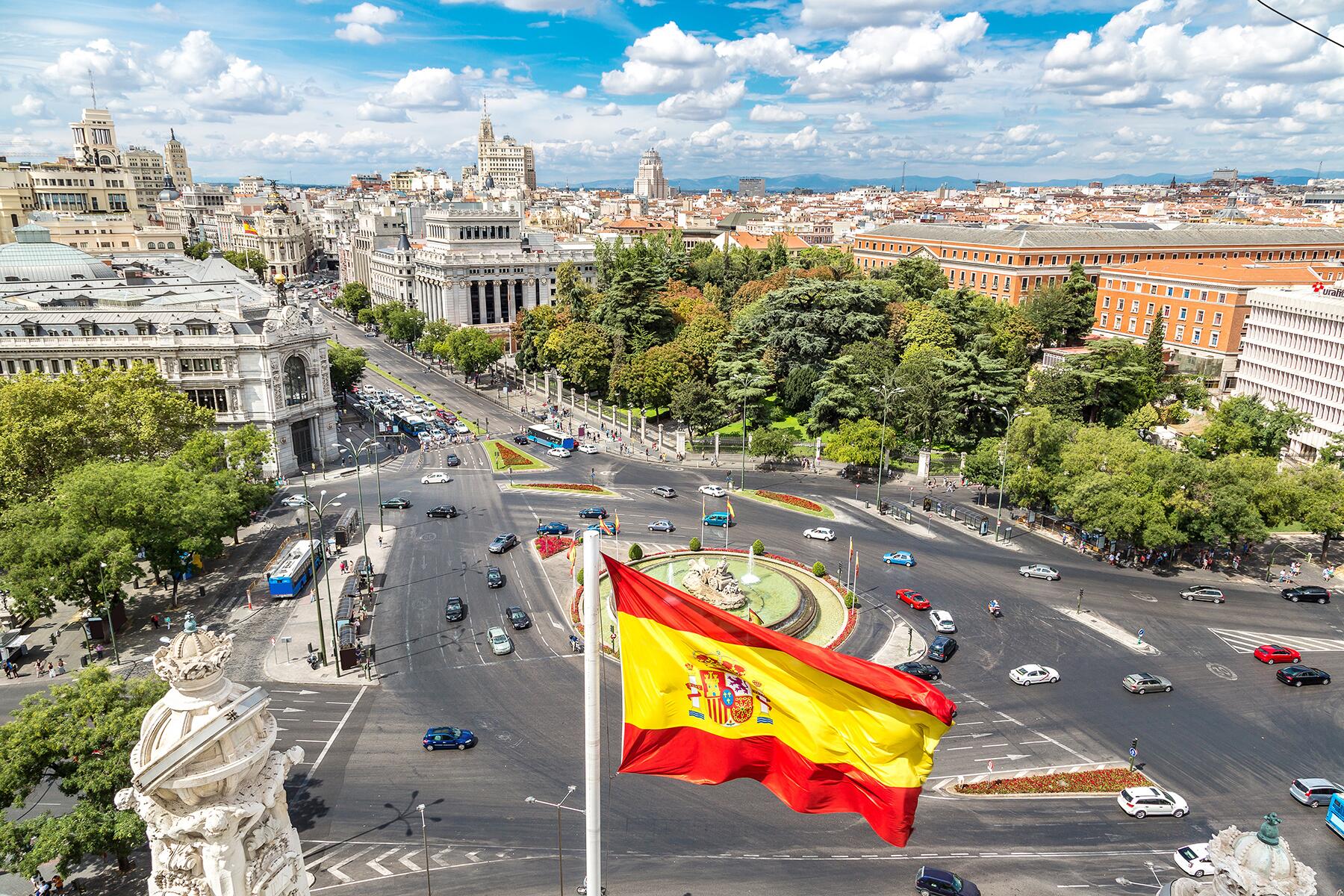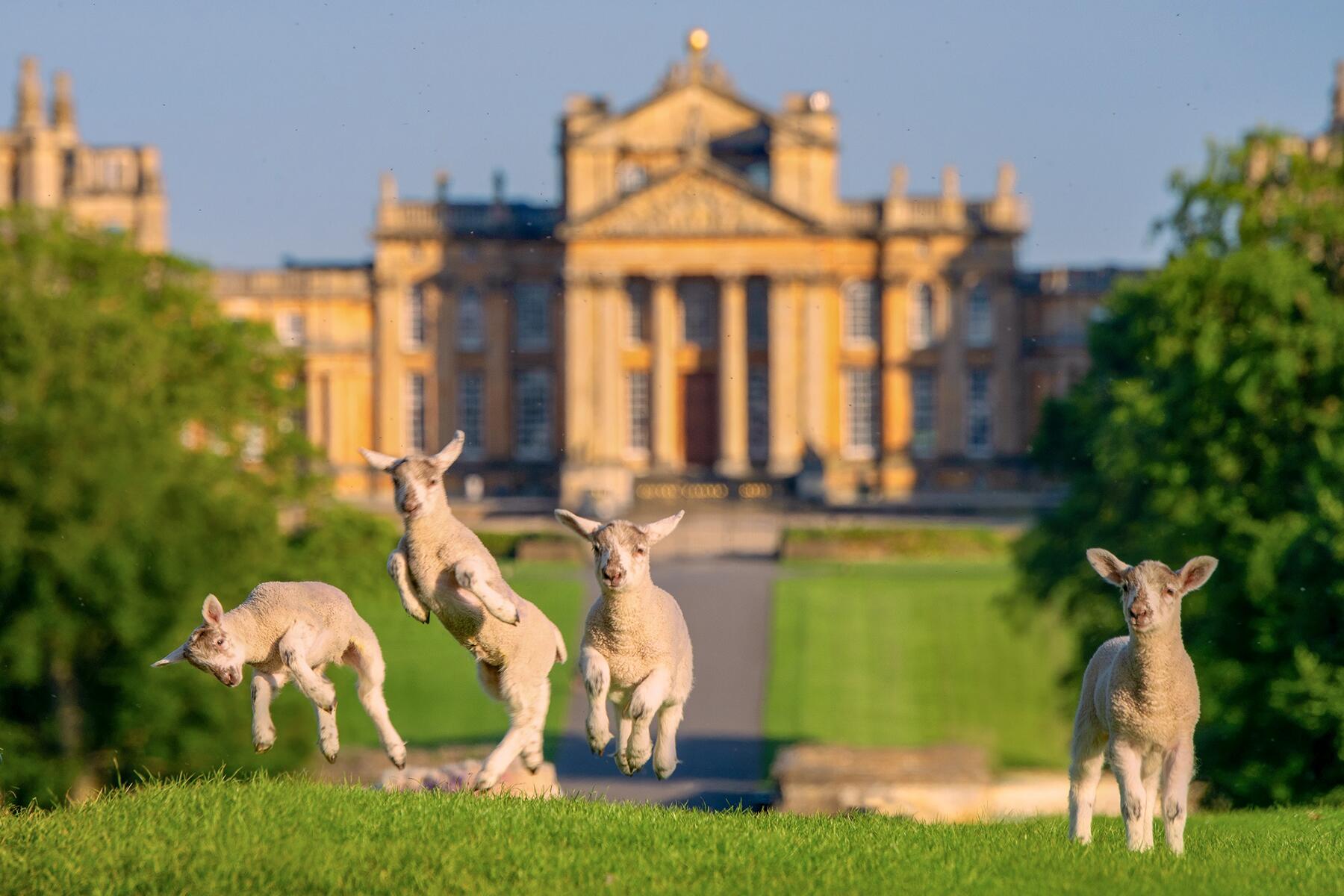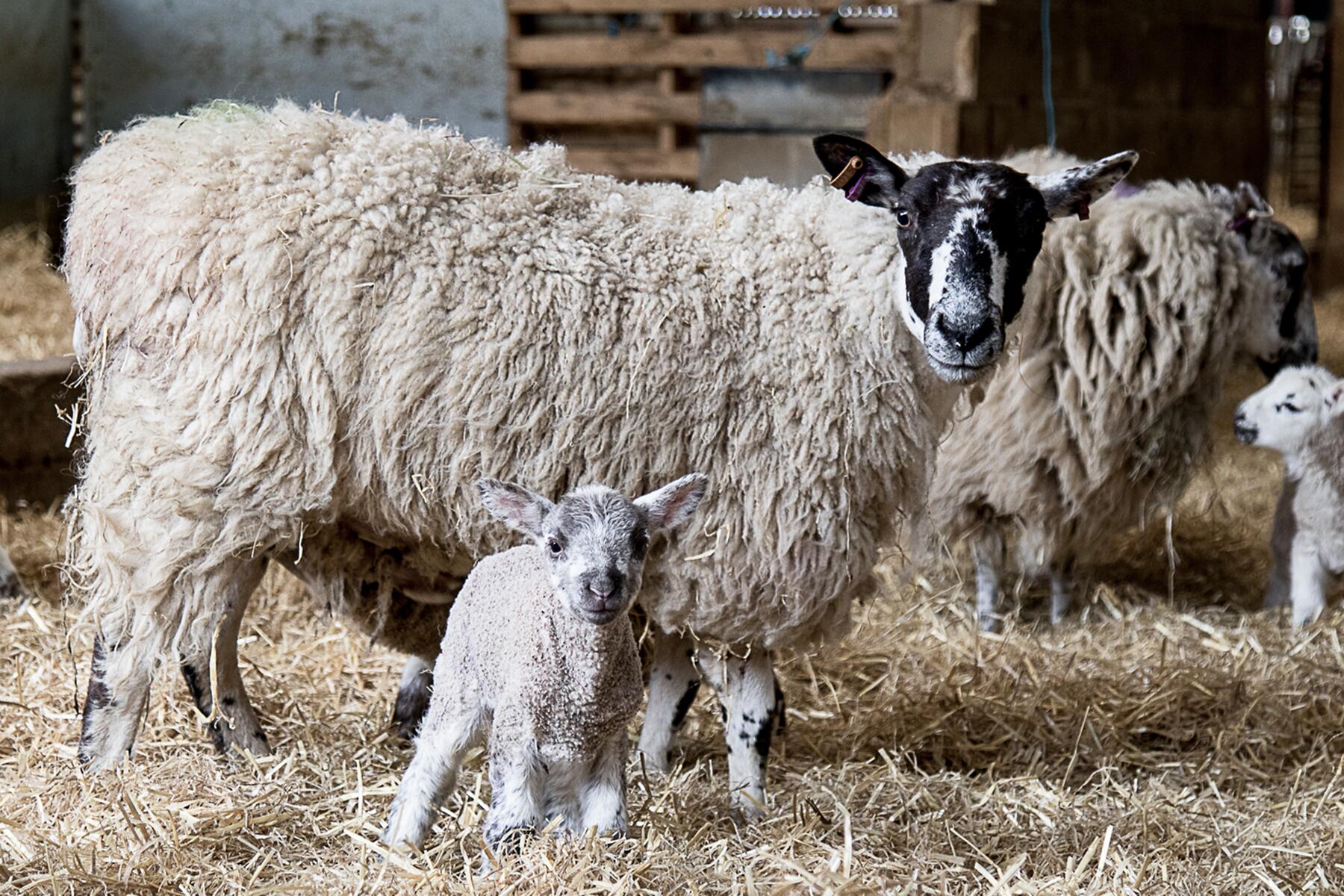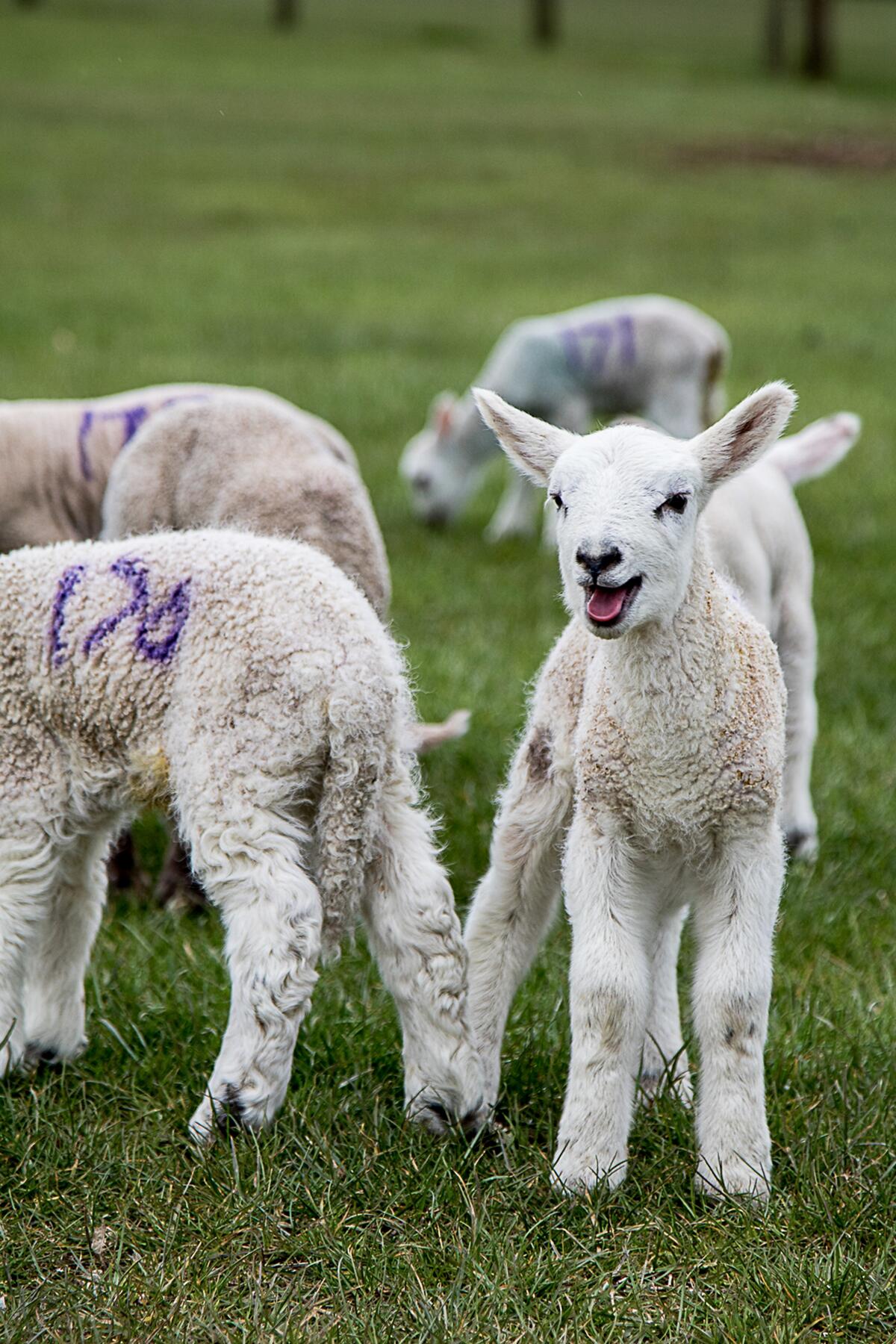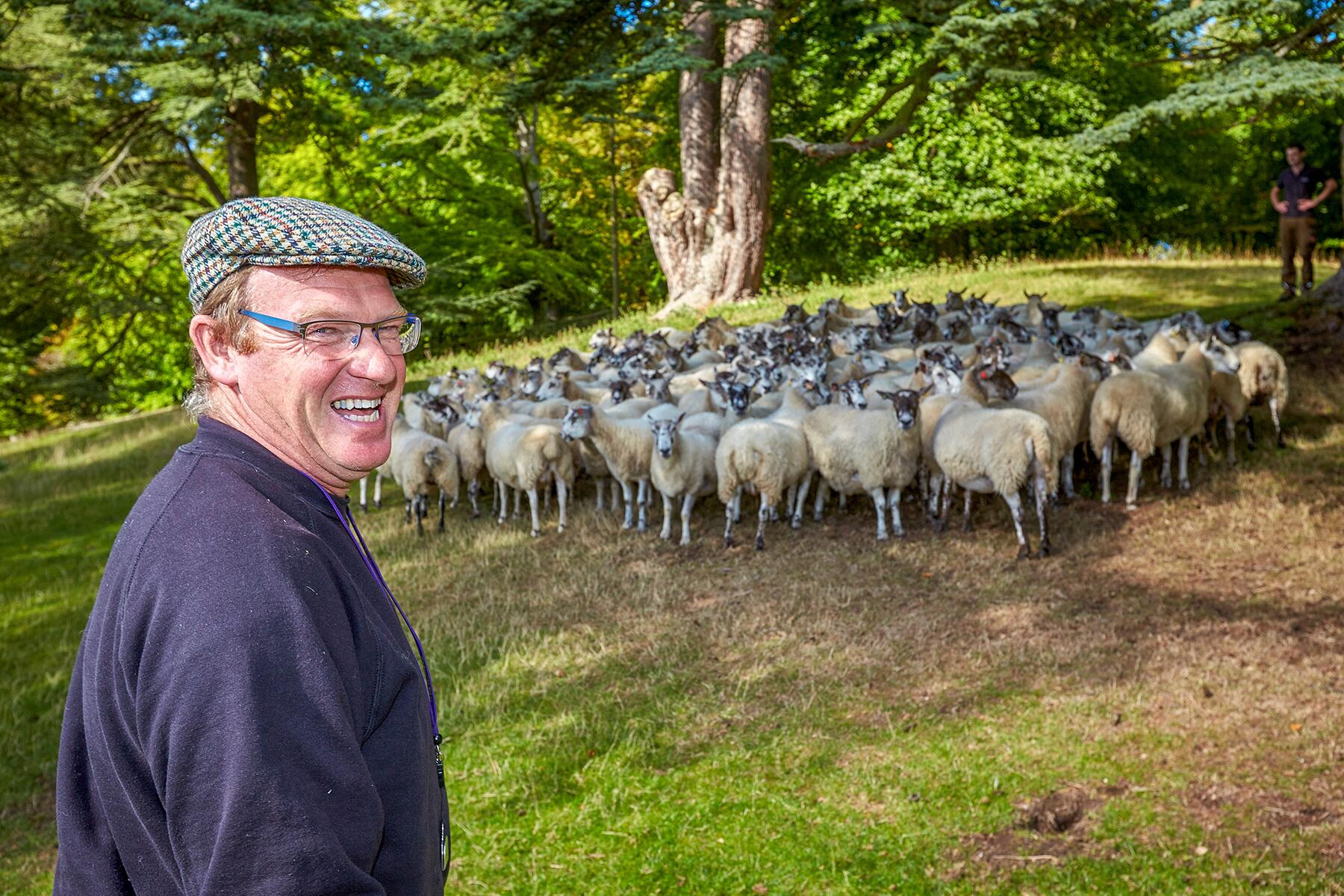As head shepherd at Oxfordshire’s UNESCO-listed Blenheim Palace estate, Charles Gerring oversees one of Europe’s largest sheep flocks.
It’s late spring and I’m standing in a hay-scented barn, trying to forget the lamb burger I ate last night as a two-day-old ball of wool waddles towards me. I’m spending the day at Oxfordshire’s Blenheim Palace estate, which is a UNESCO World Heritage site, as well as Winston Churchill’s birthplace. Wander through the grounds, laid out by Capability Brown, and you’ll find cedar-filled arboretums, Italian gardens, rose gardens, water terraces, and lakes. Oh, and sheep—lots of them. Blenheim Palace has one of the largest sheep flocks in Europe, and for Charles Gerring, the estate’s head shepherd, this is his favorite time of year.

I visit in May, which is the busiest time for Blenheim’s farm, tucked into a corner of the 12,000-acre estate. In the enormous lambing shed, the air’s filled with the frantic bleating of newborn lambs and the deeper vibrato-like retorts from the milk-heavy ewes. Eighteen-hundred wooly wonders will be born, and as we chat, Charles keeps an eye on a nearby supersized sheep, who’s due to give birth any minute. Every so often, the ewe’s sides contract and bulge as the lamb prepares to make its debut, although the expectant parent seems surprisingly calm, munching on grass and looking slightly bored. But Charles assures me that her murmur-like bleating and curled upper lip are both signs that a birth is imminent. Working out how quickly the process will take is another matter. “It depends on the sheep,” says Charles. “Sometimes it’s almost as though they’ll simply cough and a lamb will pop out, then they’ll cough again and another one appears, just like that. But with others, it can take a lot longer.”
Recommended Fodor’s Video
There’s another revelation when I spot a lamb wearing what looks to be a threadbare woolen cardigan. It turns out that this lamb is an orphan which has been given the coat of a lamb that died earlier. “We’ll then place the orphan in the pen with the ewe whose lamb died, and the ewe will accept that lamb as her own because of the smell of the wool,” explains Charles. “It’s an old-fashioned method of adoption, but it works.” Another technique (consider reading this next bit later if you’re eating your dinner), known as a wet adoption, involves positioning an orphaned lamb at the business end of a ewe that is about to give birth. The orphan will be drenched with the same amniotic fluid as the newborn lamb, and the ewe will accept the imposter as her own.
Charles explains that while sheep will often lie down to give birth, many prefer to stay standing. “And the poor lamb will land on its head!” he says. But there’s an upside to this undignified entry because the impact will rupture the amniotic sac if it hasn’t split already. “Sometimes we’ll find a lamb which has suffocated because the sheep has given birth lying down, and the sac hasn’t ruptured,” says Charles. “It’s incredibly frustrating.”

Charles gives me a quick introduction to his sheep’s ancestry. “The ewes that we have are Scotch Mules and their parents are Scotch Blackface ewes crossed with Bluefaced Leicesters. We buy around 200 Scotch Mule replacements every year to keep the ewe numbers at around 1,000. The Scotch Mules are good milkers and the Bluefaced Leicesters are large, meaty chaps, so we get lots of nice meaty lambs,” says Charles. “And that’s exactly what we want because that’s what we’re doing here—producing lambs for the meat market.” For this reason, it’s hardly surprising that Charles says he never gets attached to members of his flock, although the same can’t be said for everyone. “Last year my daughter helped raise two lambs when she was off school during the pandemic,” he recalls. “They’re called Pegg and Roxy, and they’re very friendly.” Does this mean these particular lambs will get a lucky reprieve? “Yep, those two are definitely sticking around!” he says.
Later, I take a stroll through Blenheim’s lamb-filled fields, which are accessible to the public (dogs are banned from certain areas, and must be kept on leads in all areas). Visitors can join sheep-themed buggy tours during lambing season, although these were put on hold this year due to the pandemic. On a grassy slope, one particularly exuberant lamb is using his mom as a springboard, while nearby, a cluster of five newborns have wedged themselves into a shallow hole near the base of the Column of Victory, a 134-foot monument built in 1730 and inscribed with extracts from Acts of Parliament.
“Lambing is my favorite time of year. It means stupid hours, and it’s life and death and everything that goes with it, but it’s brilliant seeing the lambs being born, then watching them bounce around the fields a few days later.”
Lambing season comes later at Blenheim because the sheep are raised entirely on grass. “They eat grass and hay and nothing out of a bag,” Charles says proudly. Pregnant sheep will only be brought inside if there are complications, and he often finds himself wrangling lambs from unexpected places. “I’ll hear a bleat when I’m walking across the fields and I’ll find a lamb down a rabbit hole. I’ve also found them stuck inside trees. If you’re not on the ball it’s easy to miss those things.”
Luckily, he’s very much on ball, partly because he’s been doing this for decades. “I grew up on a farm,” says Charles, whose ancestors have been farming Oxfordshire since the 1600s. “But my family lost the farm’s tenancy so I worked as a self-employed farmer, then arrived at Blenheim 30 years ago.”
I get the distinct impression he wouldn’t want to be anywhere else—despite the fact that during lambing season he typically works from 5 a.m. until 7 p.m, every day. “It’s my favorite time of year,” says Charles with a grin. “It’s the best. It’s stupid hours, and it’s life and death and everything that goes with it, but it’s brilliant seeing the lambs being born, then watching them bounce around the fields a few days later. It really does put a smile on your face. I probably won’t want to be wrestling sheep forever, but right now, I can’t imagine doing anything else.”
It’s a sentiment I’m sure Winston Churchill would approve of—the former prime minister, born at Blenheim in 1874, once said: “If you find a job you love, you’ll never work again.”
So next time you’re in Oxfordshire, consider stopping by Blenheim Palace to appreciate the estate’s woolly wonders. My top tip? After a wander around the gardens and a guided tour of the house, finish your day with dinner at the Orangery, with its views over the estate’s sheep-dotted meadows. Just consider steering clear of the restaurant’s (albeit delicious) slow-roasted Oxfordshire lamb unless you’re after a side order of guilt…
